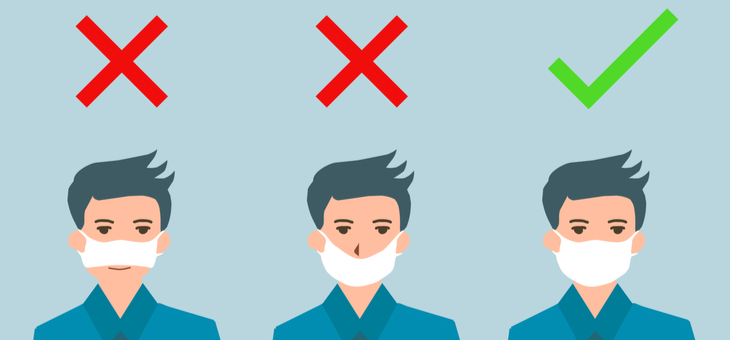The wearing of masks outdoors becomes mandatory for people 12 years and older in Victoria on Thursday. Professor Sharon Lewin, of the Doherty Institute, told the ABC this morning we “now have really good evidence that masks block transmission” of coronavirus. “Everyone can make a contribution by wearing them …”
She says the wearing of masks will have a “big impact” on the progress of the pandemic in Australia. An analysis of 172 studies published in The Lancet “found that mask wearing significantly reduces the risk of viral transmission”.
“Wearing a mask is just one measure, along with hand washing and social distancing, to try to contain COVID-19, and seems particularly useful for stopping people who have unwittingly contracted the virus, but who are not showing symptoms, from spreading,” writes Emine Saner in Britain’s The Guardian. In England, mask wearing is now mandatory on public transport and in hospitals. In the US, the Centres for Disease Control and Prevention (CDC) recommends the wearing of cloth masks “when around people who don’t live in your household”. The governor of California has also made mask wearing mandatory in public spaces.
The experts back the move, and Victorians will risk a $200 fine if they go outside without a mask. Here are some timely tips.
Reusable cloth masks
N95 respirators and surgical grade masks are effective, but they are “costly, in limited supply, contribute to landfill waste and are uncomfortable to wear for long periods”, so they should be reserved for frontline health workers.
So, most of us must either use disposable masks or make or buy cloth masks that can be washed after every use. “Cloth masks are any nose and mouth covering made of washable fabric. We recommend a cloth mask made of three layers of a mix of breathable fabrics to ensure adequate protection,” state official guidelines.
“To check your fabric, hold it up to a light: If you can easily see the outline of the individual fibres, it’s not going to make a great filter,” says Supratik Guha, a professor of molecular engineering at the University of Chicago.
Not surprisingly, most online face mask sellers were sold out on Monday morning. You can make your own masks – there are instructions here. The best fit tightly around the nose and can be made from sheets made of tightly woven cotton sheets or T-shirts. The WHO advises an inner layer of absorbent fabric and a more waterproof outer layer, such as polyester. There are video tutorials online: just google ‘homemade mask’.
Make sure you wash each mask after every use.
Hints from the Mayo Clinic on how to wear a cloth face mask
- Wash or sanitise your hands before and after putting on and taking off your mask.
- Place your mask over your mouth and nose.
- Tie it behind your head or use ear loops and make sure it’s snug.
- Don’t touch your mask while wearing it.
- If you accidentally touch your mask, wash or sanitise your hands.
- If your mask becomes wet or dirty, switch to a clean one. Put the used mask in a sealed bag until you can wash it.
- Remove the mask by untying it or lifting off the ear loops without touching the front of the mask or your face.
- Wash your hands immediately after removing your mask.
- Regularly wash your mask with soap and water by hand or in the washing machine.
Face mask precautions:
- Don’t put masks on anyone who has trouble breathing or is unconscious or otherwise unable to remove the mask without help.
- Don’t put masks on children under two years of age.
- Don’t use face masks as a substitute for social distancing.
Tips for adjusting to a face mask
It can be challenging to get used to wearing a face mask. Here are some tips for making the transition:
- Start slow. Wear your mask at home for a short time, such as while watching television. Then wear it during a short walk. Slowly increase the time until you feel more comfortable.
- Find your fit. If your mask isn’t comfortable or is too difficult to breathe through, consider other options. Masks come in a variety of styles and sizes.
- Tie one on. Instead of a face mask, try a scarf or bandanna to cover your nose and mouth.
Do you have a face mask? Do you wear it when in public?
If you enjoy our content, don’t keep it to yourself. Share our free eNews with your friends and encourage them to sign up.
Related articles:
https://www.yourlifechoices.com.au/health/covid19/where-youre-most-likely-to-get-covid19
https://www.yourlifechoices.com.au/health/covid19/confused-by-social-isolation-rules
https://www.yourlifechoices.com.au/health/covid19/how-to-correctly-selfisolate

